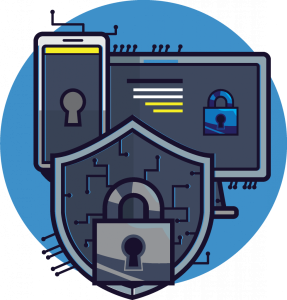Syllabus
Syllabus of Module 6: Comprehensive Network Security
Workload and ECTS
Video classes: 8 hours
Autonomous work: 67 hours
ECTS: 3
Learning Outcomes (Knowledge, Skills and Competences)
The Comprehensive Network Security module provides the theoretical and practical knowledge about Cyber Security Technologies, namely about Firewalls, Intrusion Detection Systems (IDS), Intrusion Prevention Systems (IPS), and Malware and Antivirus. The skills to be developed are as follows:
1. Understand the Firewalls role on Cyber Security Technologies, its types and characteristics, topologies and architectures, and common solutions;
2. Understand the Intrusion Detection Systems role on Cyber Security Technologies, its types and characteristics, implementation architectures and common solutions;
3. Understand the Intrusion Prevention Systems role on Cyber Security Technologies, its types and characteristics, implementation architectures and common solutions;
4. Understand the Anti-Malware role on Cyber Security Technologies, how did malware spreads, the various types of malware, how to detect, remove and prevent from malware infections, how the specific case of an anti-malware software – the antivirus – works and its common solutions.
Contents
1. Firewalls
1.1 Introduction to Firewalls
1.2 The Need for a Firewall
1.3 Firewall Types and Characteristics
1.4 Firewall Topologies and Architectures
1.5 Firewalls Examples
2. Intrusion Detection Systems
2.1 Introduction to Intrusion Detection Systems
2.2 Intrusion Detection Systems Types and Characteristics
2.3 Intrusion Detection Systems Implementation Architectures
2.4 Intrusion Detection Systems Common Solutions and Examples
3. Intrusion Prevention Systems
3.1 Introduction to Intrusion Prevention Systems
3.2 Intrusion Prevention Systems Types and Characteristics
3.3 Intrusion Prevention Systems Implementation Architectures
4. Malware and Antivirus
4.1 Introduction to Malware
4.2 How do we got Malware Infections
4.3 Most Common Malware Types
4.4 How to Detect, Remove and Prevent from a Malware Infection
4.5 The Specific Case of an Antivirus
4.6 How does an Antivirus Work
4.7 Selecting a Good Antivirus Software
Teaching Methodologies
A course book and a video lesson with the explanation of the course contents, a set of exercises for practice and apply the learnings from the course book and video lesson, and, a set of games for a complementary pedagogical approach for learning. There is also a final test for personal assessment.
Main Bibliography
[1] Chris Sandres, “Practical Packet Analysis: Using Wireshark to Solve Real-World Network Problems”, 3rd Edition, ISBN: 978-1-59327-802-1, NO STARCH PRESS, 2017
[2] Andrew S. Tanenbaum, Nick Feamster, David J. Wetherall, “Computer Networks”, 6th Edition, ISBN-13: 9780137523214, Pearson, 2021
[4] Behrouz A. Forouzan, “TCP/IP Protocol Suite”, 4th Edition, ISBN: 978-0070166783, McGraw-Hill Higher Education, 2009.

